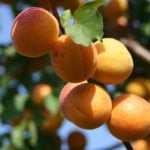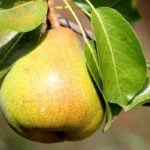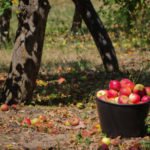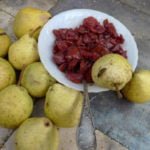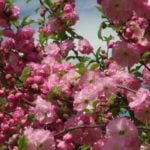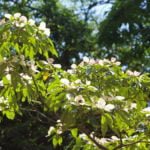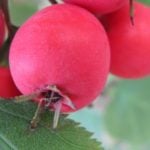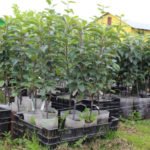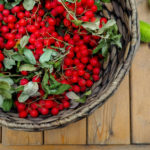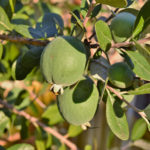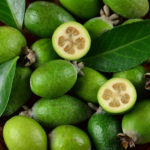Rowan (Mountain Ash) tree is a genus of woody apple plants. Approximately, this genus unites 80-100 species. This fruit tree has become widespread almost throughout Europe, the Caucasus and the Near East. The scientific name of the genus “sorbus” comes from the Celtic language, it means “bitter, tart”, this is due to the taste of berries. The name of the species comes from the Latin word, which translates as “bird” and “catch”. The fact is that the berries of this plant like to eat birds, so people used them as bait.
Also, the tree was part of the culture of the Scandinavians, Slavs and Celts. They believed that mountain ash had magical powers.
Mountain Ash Tree Features
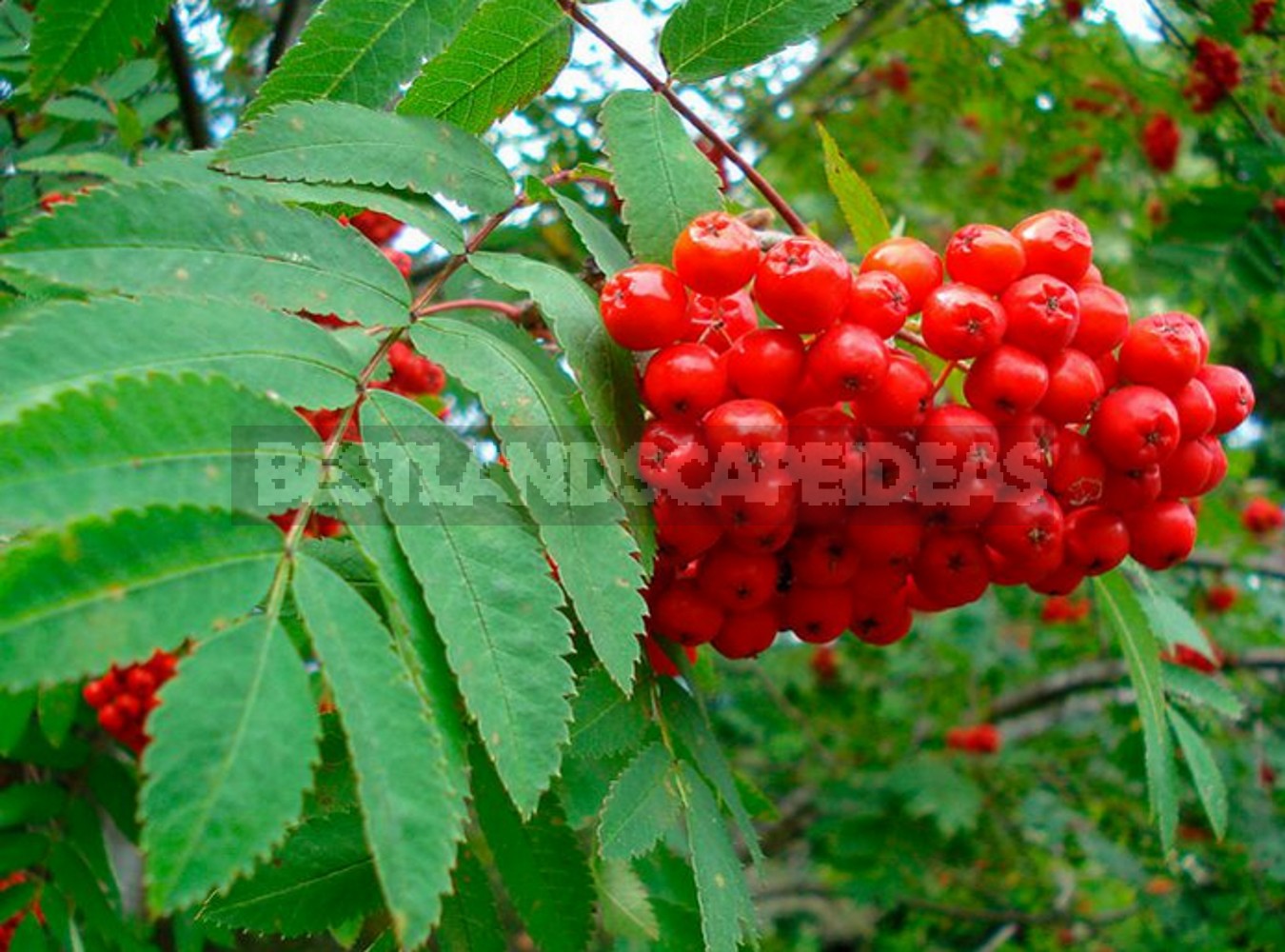
Mountain ash is a shrub or tree, the height of which does not exceed 12 meters (13.1 yard). The shape of the crown is rounded, there is a pubescence on the surface of the red-gray stems. In adult trees, the bark is smooth and glossy, it has a brown-gray or gray-yellow color. In autumn, the foliage changes its color to red and golden shades.
The final lush corymbose inflorescences have a diameter of about 10 centimeters (3.9 inches), they consist of a large number of white flowers that have an unpleasant aroma. The fruit is a juicy apple of red-orange color, the diameter of which reaches 10 mm (0.4 inches). This tree blooms in May–June. Berries fully ripen in the last weeks of the summer period or the first autumn.
When planting, it should be remembered that such a crop reacts extremely negatively to the smoke and gas content of the air, as well as to the swampiness and stagnation of water in the ground.
Rowan wood is characterized by elasticity and hardness, it is very easy to process. In ancient times, it was used to make runes and spindles. The berries of this crop are used to make dyes for fabric.
Mountain Ash Tree Planting
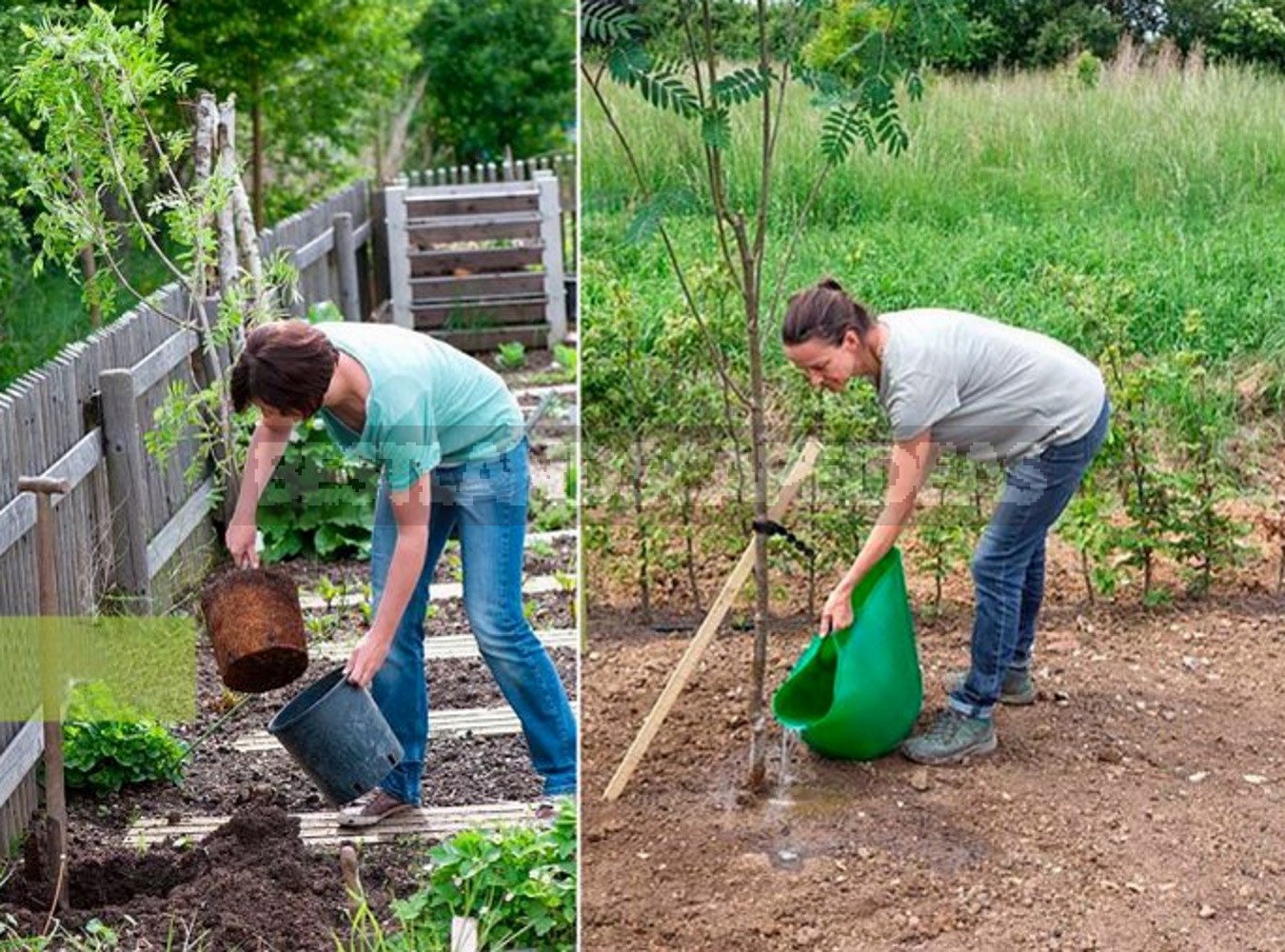
Since the rowan tree is quite high, it is recommended to plant it on the border of the garden, in this case it will not cause shading of the site. A nutritious soil (light or medium loam, which perfectly retains water) is best suited, but rowan can be grown on less fertile soil. Planting is recommended to be carried out in the spring before the sap movement begins or in the fall during the fall of leaves. In order to harvest a good crop, it is recommended to plant several plants of different varieties at once.
When buying seedlings, you should make a thorough inspection of their root system, pay attention to the fact that it should be completely healthy and well-developed. The developed root system has 2 or 3 branches, which reach a length of more than 0.2 m (0.2 yard). A seedling with dried and weathered roots is not recommended to purchase. Examine the bark, it should not be wrinkled, but rather smooth. Break off a small piece of bark from the plant, if its inner side is brown, then the seedling may be dead. In a normal living plant, it will have a green color. Before planting, the plant should be prepared, for this it is necessary to cut out all the injured, dried up and damaged by the disease stems and roots. If the rowan is planted in the fall, then all the leaf plates are torn off from its branches, while you should try not to injure the kidneys located in the sinuses.
Between the seedlings, a distance of 4 to 6 meters (4.4-6.6 yard) should be observed, the same distance should be from the rowan tree to other trees in the garden. The diameter and depth of the pit can vary from 0.6 to 0.8 m (0.7-0.9 yard). Before planting, prepare the soil mixture, which should consist of 5 kilograms (11 pound) of topsoil and peat compost, 200 grams (7 ounce) of superphosphate, 2-3 shovels of rotted manure and 100 grams (3.5 ounce) of wood ash. Mix everything well. Fill the pit with 1/3 of this soil mixture, then fill up to half of it with a simple soil. Then 10 liters of water is poured into the pit. Wait until the liquid is completely absorbed into the ground.
The root system of the plant must be dipped in a clay chatterbox, then it is immediately installed in the center of the pit, which is filled with soil from the top layer or the remains of the earth mixture. When the plant is planted, the surface of the soil around it must be compacted, then it is well watered. The tree should be planted 2-3 cm (0.8-1.2 inches) deeper than it was grown in the nursery.After the water is completely absorbed, its surface must be covered with a layer of mulch, the thickness of which can vary from 5 to 10 centimeters (2-3.9 inches).
Mountain Ash Tree Care
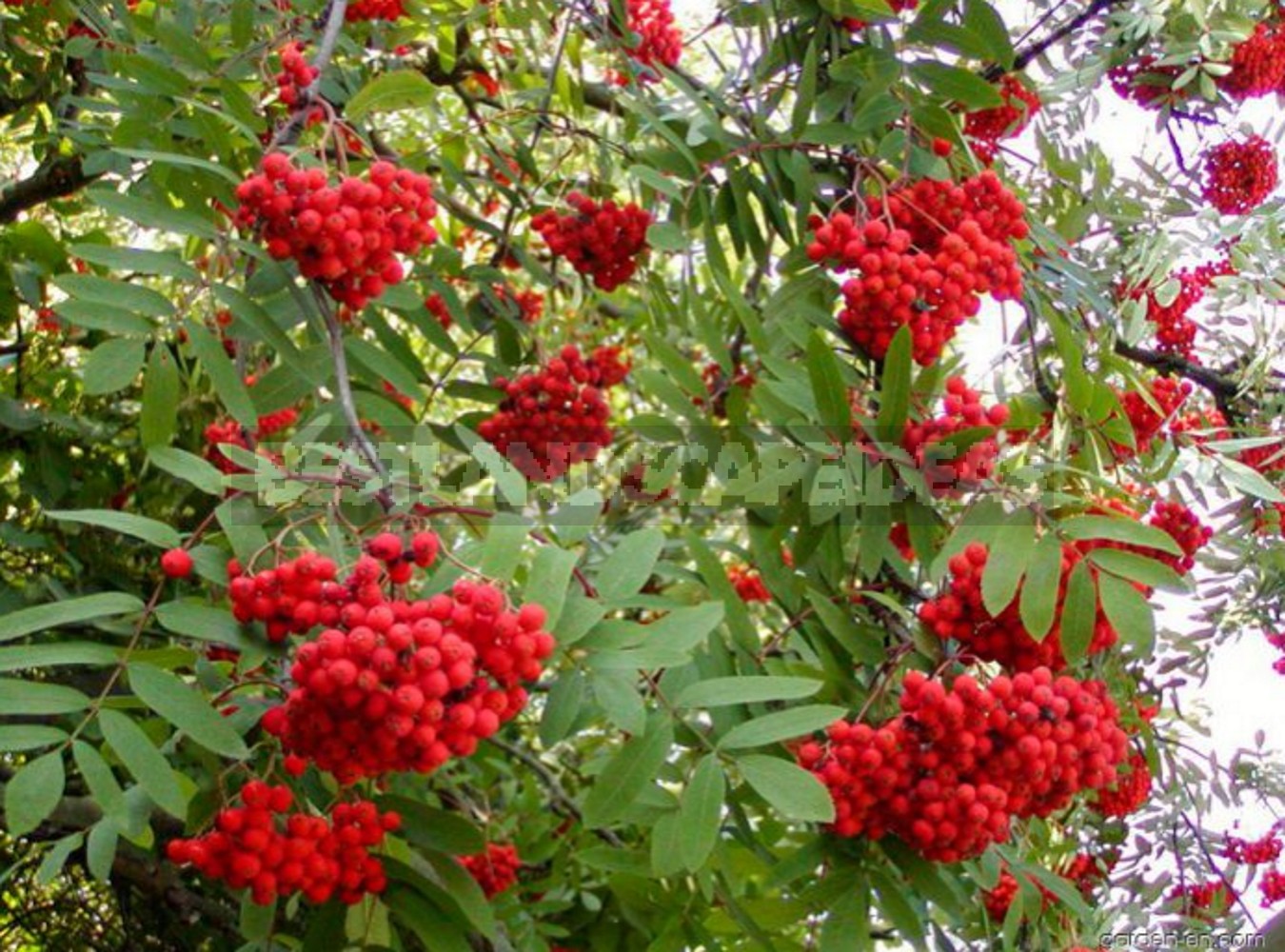
For the normal growth and development of the plant, it must be watered, weeded, loosened, pruned, fed, and treated in the fight against pests and diseases in a timely manner.
Such a tree needs watering only during a prolonged drought. At the same time, it should be taken into account that the plant needs mandatory watering at the very beginning of the growing season and after planting in open soil, and even 15-20 days before the harvest is harvested, and 2-3 weeks after that. Along the perimeter of the trunk circle, it is recommended to make grooves, into which water is poured during irrigation. For 1 tree, from 20 to 30 liters of water is taken for one irrigation, while the final volume of the liquid used depends on the condition and composition of the soil, as well as on the age of the viburnum itself.
The surface of the trunk circle should be loosened at the beginning of the spring period, during the summer this procedure is carried out from 2 to 3 times. And the surface of the trunk circle must be loosened after the entire crop is harvested. The easiest way is to loosen the soil the next day after rain or watering. During loosening, you need to pull out all the weeds. When the trunk circle is loosened, its surface must be re-filled with a layer of mulch.
To make the mountain ash more productive, it will need systemic fertilizing. Starting from the third year of growth, humus or compost is added to the soil under the plant from 5 to 8 kilograms (11-17.6 pound) and ammonium nitrate 50 grams (1.8 ounce). At the beginning of June, 1 bucket of bird droppings (1:10) or mullein (1:5) should be poured under the tree. In the last summer weeks, 100 grams (3.5 ounce) of superphosphate and 500 milligrams (0.02 ounce) of wood ash must be added to the trunk circle.
Pruning is carried out at the very beginning of the spring period before the awakening of the kidneys. It is necessary to cut out all the dried, diseased and growing shoots inside the crown, as well as those that depart at right angles. Those varieties that bear fruit on last year’s stems will need thinning and a slight shortening of the branches.
The most important goal of pruning mountain ash is the best and uniform illumination of its crown, this has an extremely positive effect on the yield of the plant. Due to the fact that such a tree has a pyramidal crown shape, the branches grow at an acute angle to the trunk, which makes them more fragile. When forming skeletal branches, you should try to make them appear at an obtuse or right angle.
If the plant has a weak growth, then it will need a rejuvenating pruning.
Diseases and Pests
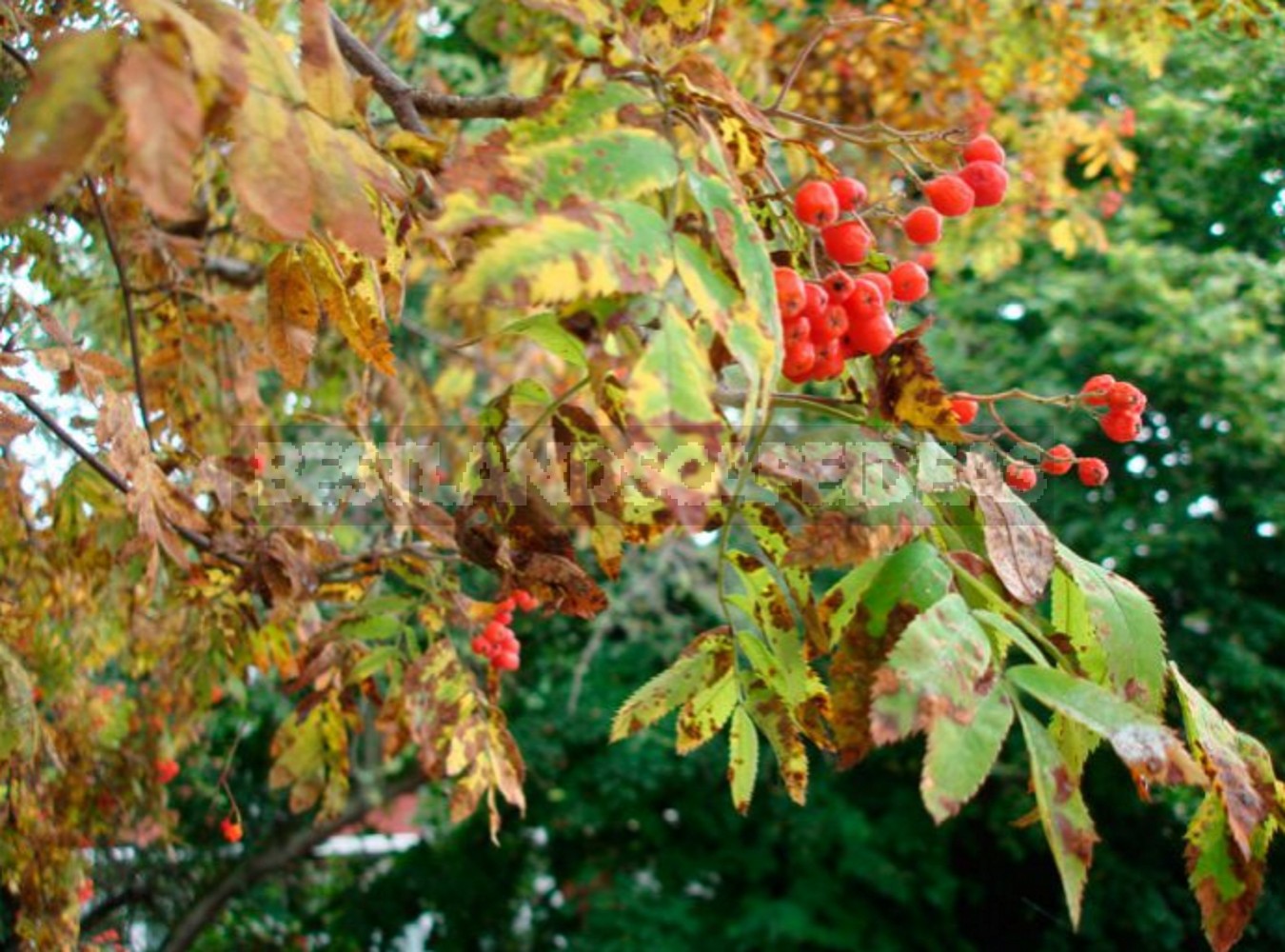
In May or June, you need to carefully examine the mountain ash, because it is at this time that the first symptoms of the disease or damage to harmful insects may appear. This plant is susceptible to the following diseases: anthracnose, septoria, brown and gray spots, powdery mildew, monoliosis, scab, rust, necrosis (black, nectrium and cytosporum) and viral ring mosaic. If the plant was planted completely healthy, while all the rules of agricultural technology of this crop were observed during planting and care for it, then the mountain ash may never get sick at all. The fact is that only weakened trees are susceptible to diseases. However, despite everything, you need to periodically inspect the mountain ash, so that, if necessary, you can start treatment in a timely manner.
Any of the types of necrosis, as well as mosaic, are incurable diseases. In this regard, do not forget to make periodic inspections of mountain ash, because any disease is easier to cure at the initial stage of development.
Mountain ash is affected by the same diseases as other crops of the Rose family (apple trees, plums, pears). At the same time, the symptoms of diseases and methods of treatment are the same.
About 60 species of mites and other harmful insects can settle on mountain ash, which injure the stems, berries, seeds, leaf plates, flowers and buds of the tree. Most of these pests can settle on various fruit crops of the Rose family. Most often, the rowan tree is inhabited by:
- Weevils. To destroy them, use Karbofos.
- Bark beetles. To get rid of them, the plant should be sprayed with Confidor, Actara and Lepidocide.
- “The Pyadenits”. To destroy these pests, Karbofos, Chlorophos or Cyanox are used.
- Rowan gall mites. When they appear, the tree is sprayed with colloidal sulfur.
- Rowan moths. They are destroyed by Chlorophos.
- Green apple aphid. To destroy it, use Decis or Aktellik.
- Shields. You can get rid of them if you spray the rowan with the drug 30 plus.
- Apple fruit saws. In order to destroy them, use an infusion of white mustard. To prepare it, you need to combine 1 liter of water and 10 grams (0.35 ounce) of mustard powder, everything is mixed and left for 24 hours. Before use, the infusion should be diluted with water in a ratio of 1:5.
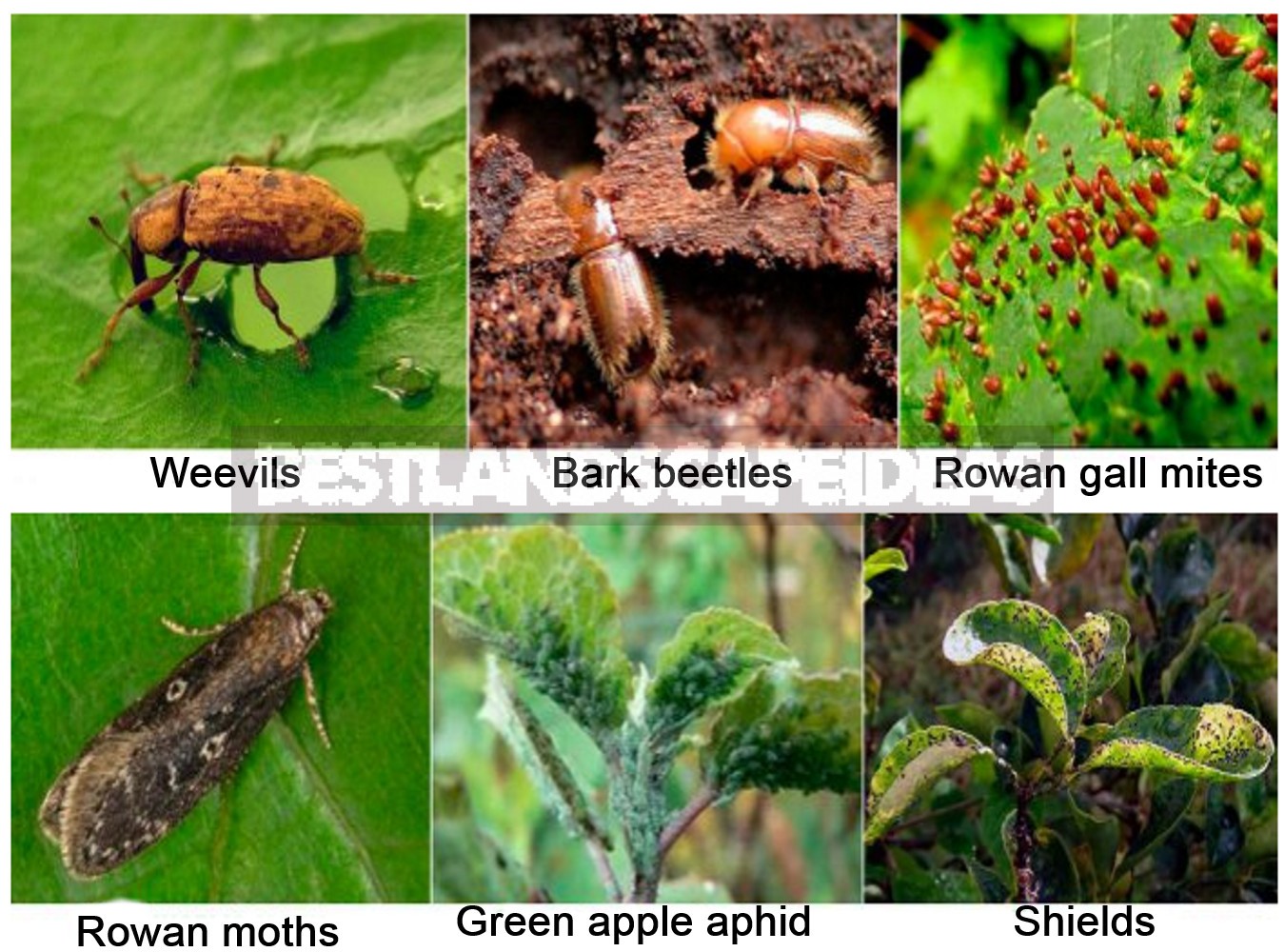
In order to prevent pests, the tree should be sprayed on the foliage before the sap movement begins, for this purpose, a solution of copper vitriol (100 grams/3.5 ounce per 1 bucket of water) is used. Also, in order to prevent the fall, it is necessary to rake all the foliage from the site and destroy it, while the soil in the trunk circles is dug up.
Mountain Ash Reproduction
For the reproduction of red mountain ash, a vegetative and generative (seed) method is used. From seeds, the species rowan is most often grown. The seeds are sown in the autumn. To begin with, they are taken out of the fruit and washed from the remains of the pulp, then they need to be buried in the soil for 0.5-1 cm (0.2-0.4 inches). From above, the surface of the crops should be covered with a layer of mulch (dried fallen leaves). If the seeds are to be sown in the spring, they will need to be stratified. To do this, they are combined with coarse-grained sand in a ratio (1:3), then the mixture should be kept at room temperature for 4-8 weeks, and then for 3-4 months removed to the refrigerator shelf intended for vegetables. The seedlings that appear need systematic watering and weeding, as well as loosening the soil surface around them. A tree grown generatively begins to bear fruit in 4-5 years.
For the propagation of valuable varietal rowan, vegetative methods are used, for example: green and lignified cuttings, grafting, layering and growth. As a rootstock for grafting a varietal cuttings, it is recommended to take a seedling of rowan, ordinary or Moorava grown from the seed. Vaccination should be carried out in the first days of April, when the sap movement begins, as well as in July or August. Remove the bandage from the vaccination site after 20 days. It is necessary to trim the top of the rootstock, while the thorn should remain. To this thorn, and you need to make a garter of a growing varietal shoot.
Mountain Ash Tree Types and Varieties
Gardeners cultivate most types of mountain ash. Most of these species are fruit-bearing, but there are also ornamental ones.
Mountain ash elderberry (Sorbus sambucifolia)
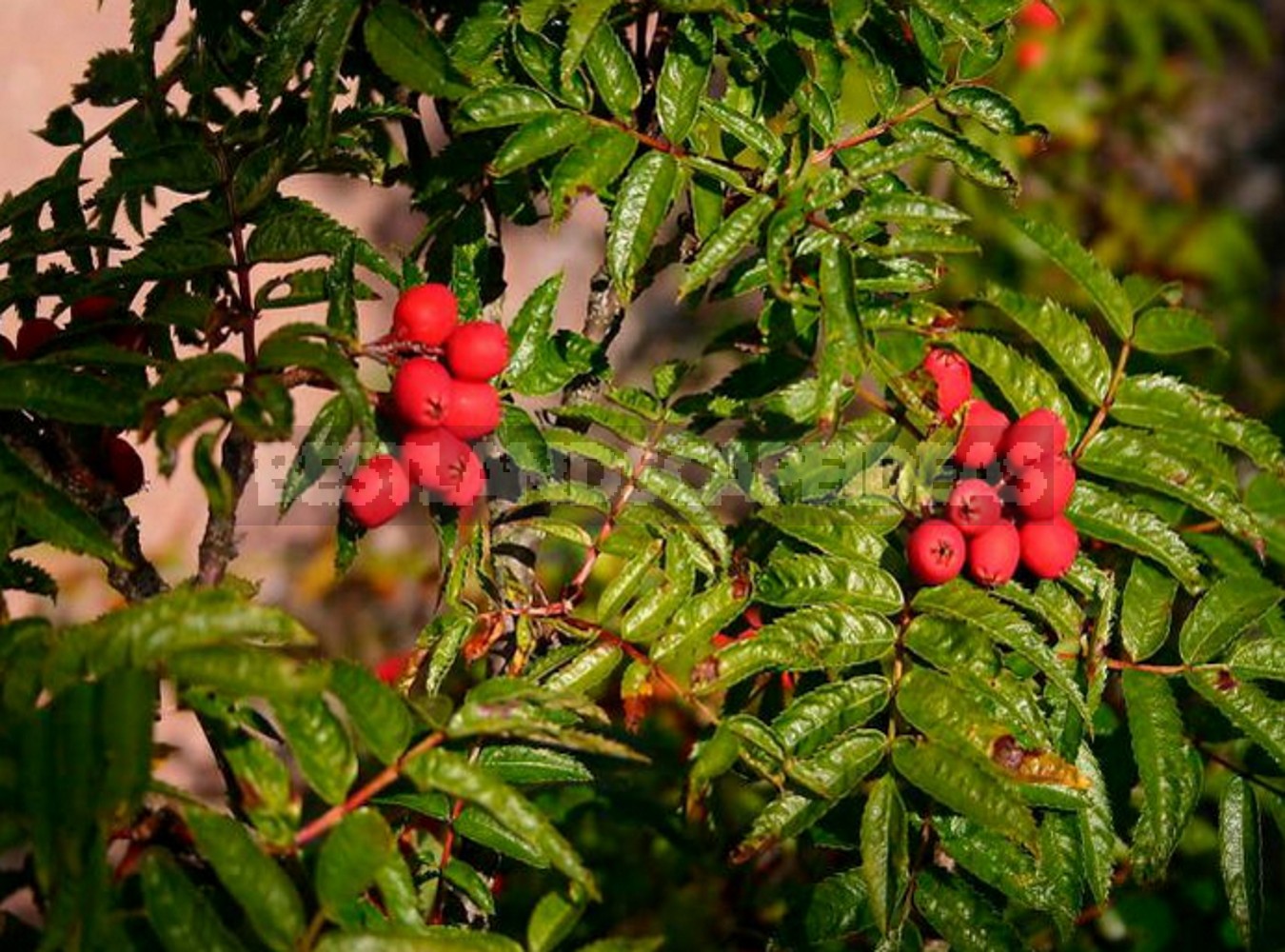
In natural conditions, this species is found in Japan and Kuril Islands. This spectacular shrub reaches a height of 250 cm (8.2 feet). Edible berries are juicy rich red color and spherical shape, they have a fifteen-millimeter (0.6 inches) diameter and a sweet and sour taste. They also have no bitterness and have a very pleasant smell. The fruits may not fall from the branches until the spring period. This plant is undemanding to the ground, and is resistant to drought and frost.
Mountain ash Glogovina (Sorbus torminalis)
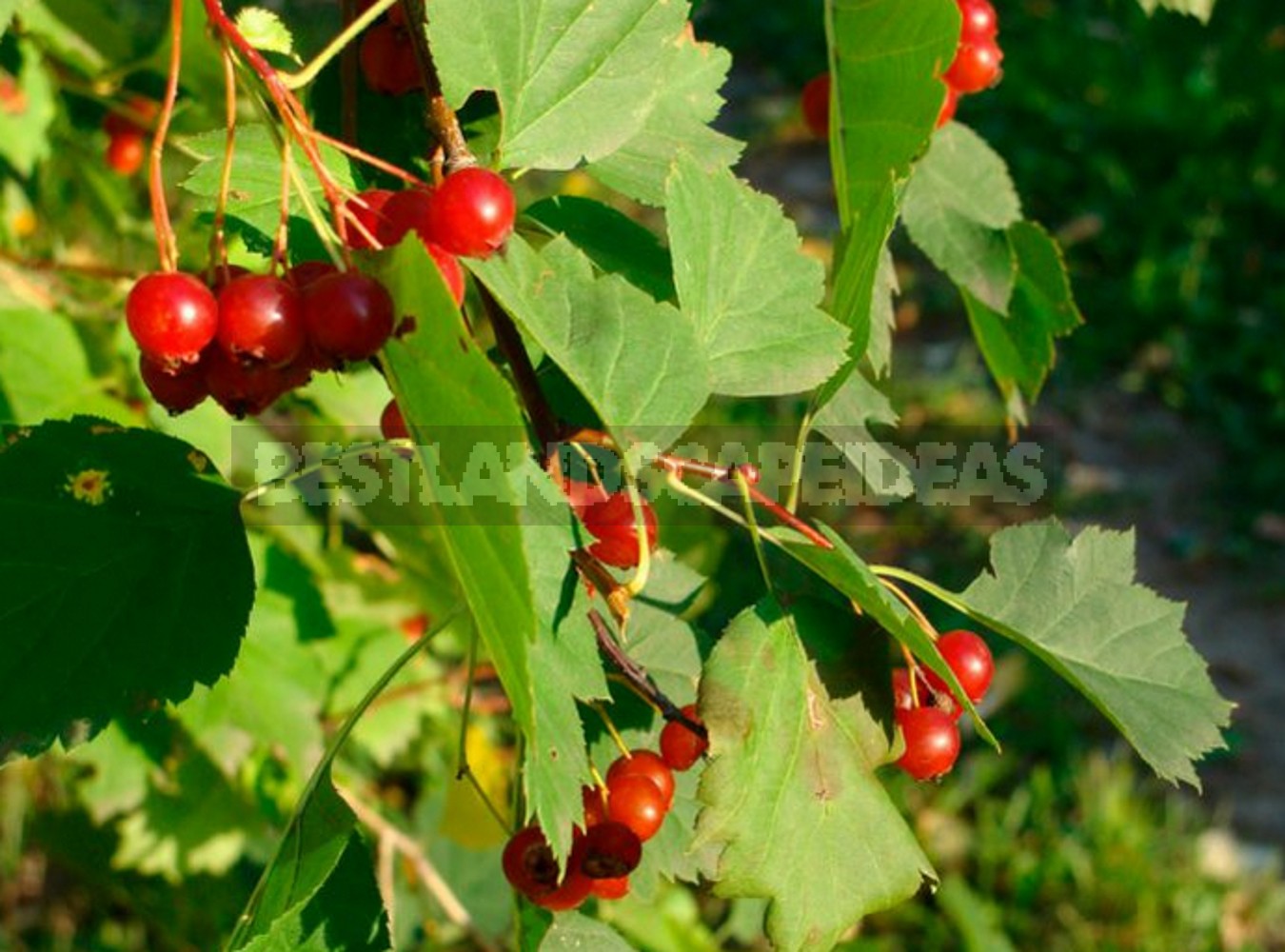
In the wild, this species can be found in the Crimea, Western Europe, the Caucasus, Southwestern Ukraine and Asia Minor. This mountain ash does not grow in very large groups or singly. In height, such a tree can reach 25 meters (27.3 yard). Rounded berries, reaching a diameter of 1.8 cm (0.7 inches), have a pale red or orange color, which gradually changes to brown. The mealy pulp has a sweet-sour taste. This species has a high resistance to frost, but does not differ in drought resistance.
Domestic mountain ash (Sorbus domestica)
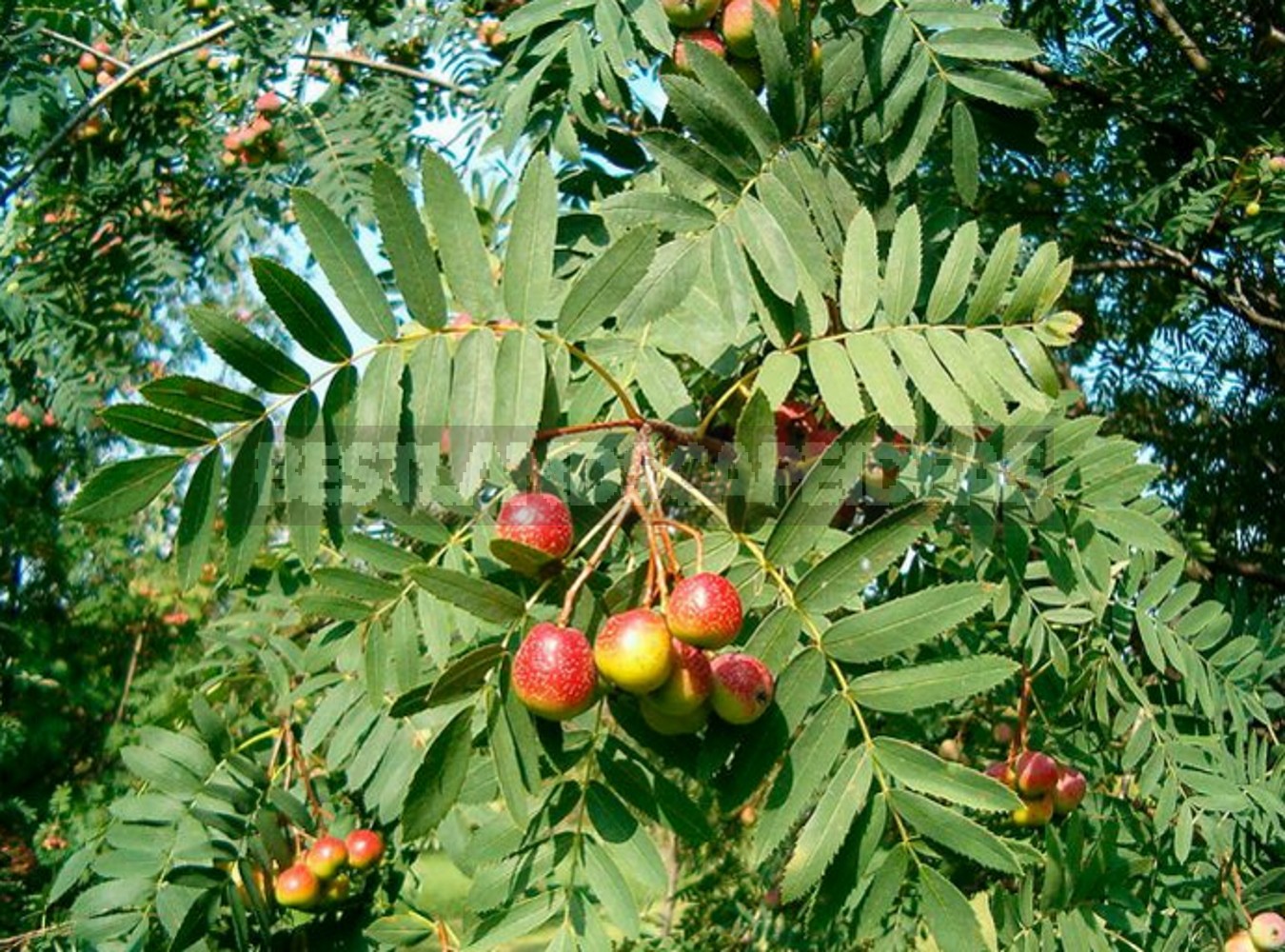
Or large-fruited mountain ash (Crimean). In natural conditions, this species is found in the southern part of Western Europe and in the Crimea, it prefers to grow in the undergrowth of broad-leaved forests singly or in groups. This plant is characterized by slow growth and reaches a height of 15 meters (16.4 yard). The crown shape is broad-pyramidal or spherical. The bark covering the trunk is already fractured in the young plant. But the stems are almost bare, smooth and glossy. Oblong-ovate or pear-shaped berries, with a diameter of up to 30 mm (1.2 inches), can be colored yellow-green, red or brown, have a powdery fragrant slightly sweet astringent pulp, including many stony cells. This plant is resistant to pests, drought and frost. There are 2 shapes (pear-shaped and apple-shaped).
Round-leaved mountain ash (Sorbus aria)
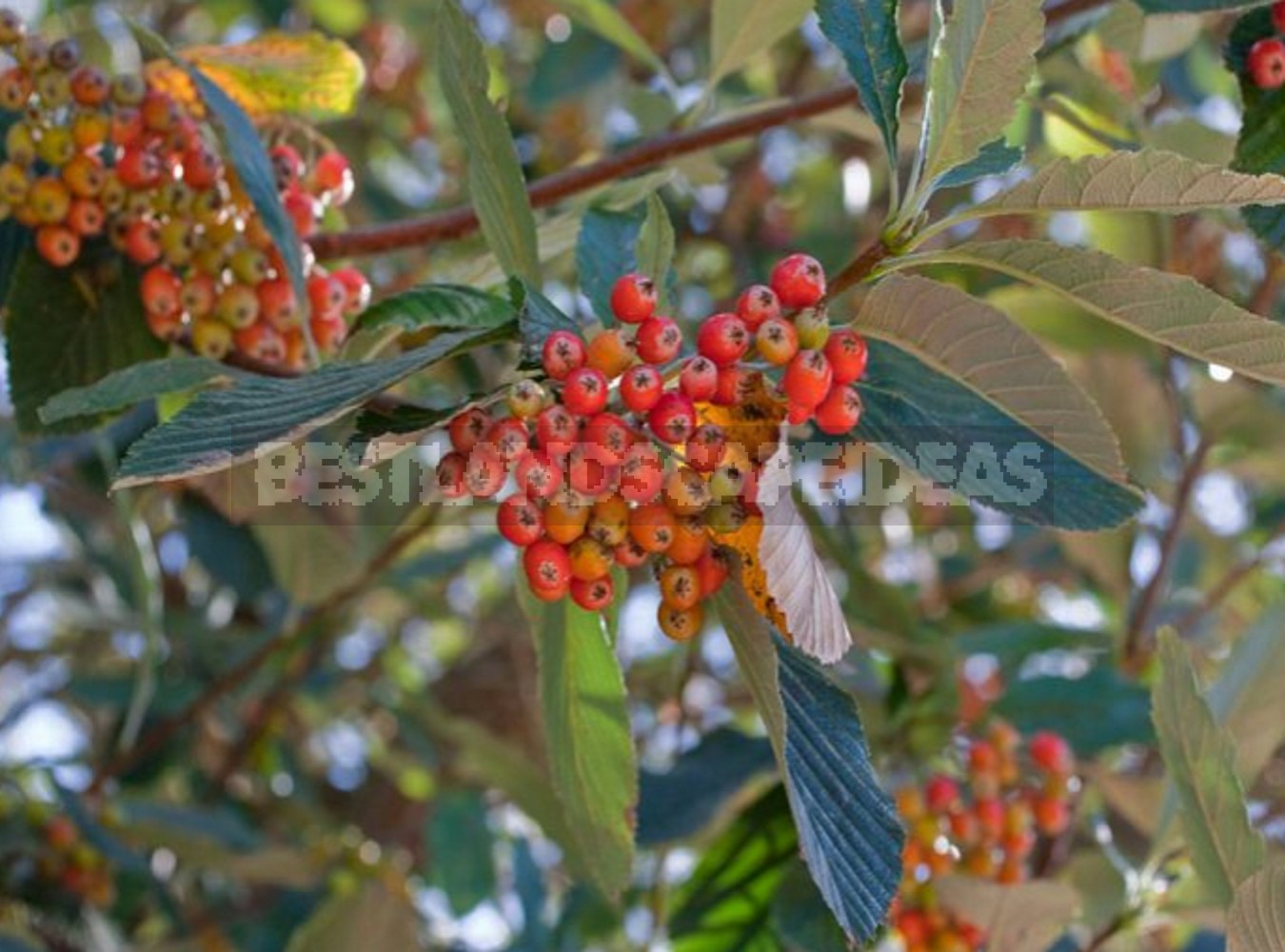
Or aria, or powdery mountain ash – this species is found in the Carpathians and in the mountains of Central and Southern Europe. The height of such a strong-growing tree is about 12 meters (13.1 yard). The crown shape is broad-pyramidal. The trunk is covered with brown-red or brownish bark, on the surface of the stems there is a felt pubescence. Leathery whole leaf plates of round-elliptical shape along the edge of acute-biconvex. During the opening, the foliage is white-felt, then the front surface of the leaves is colored green. In the autumn, the color of the foliage changes to various shades of bronze color, because of this, the mountain ash externally begins to resemble alder. The corymbs, which are up to 8 centimeters (3.8 inches) across, consist of white flowers. Edible berries of spherical shape in diameter reach 15 mm (0.6 inches), they are colored in red-orange or pink-orange color. The sweet-sour mealy pulp is not as tasty as that of the sweet-fruit varieties. Cultivated since 1880. There are several garden forms:
- Dekaisne. Flowers and leaf plates of this form have a larger size.
- Edible. The shape of the leaf plates is elliptical or oblong. The berries of such a plant are somewhat larger than those of the main species.
- Chrysophylla. Throughout the season, the foliage is colored pale yellow. In autumn, it turns an oily yellow.
- The manifest. During the opening, the leaf plates are snow-white, in the summer their front surface becomes green. In autumn, their color changes to bronze. Red berries on the surface have a pubescence in the form of a white pile.
- Majestica. The height of this plant is about 15 meters (16.4 yard). It does not form berries.
Mountain ash hybrid (Sorbus x hybrida)
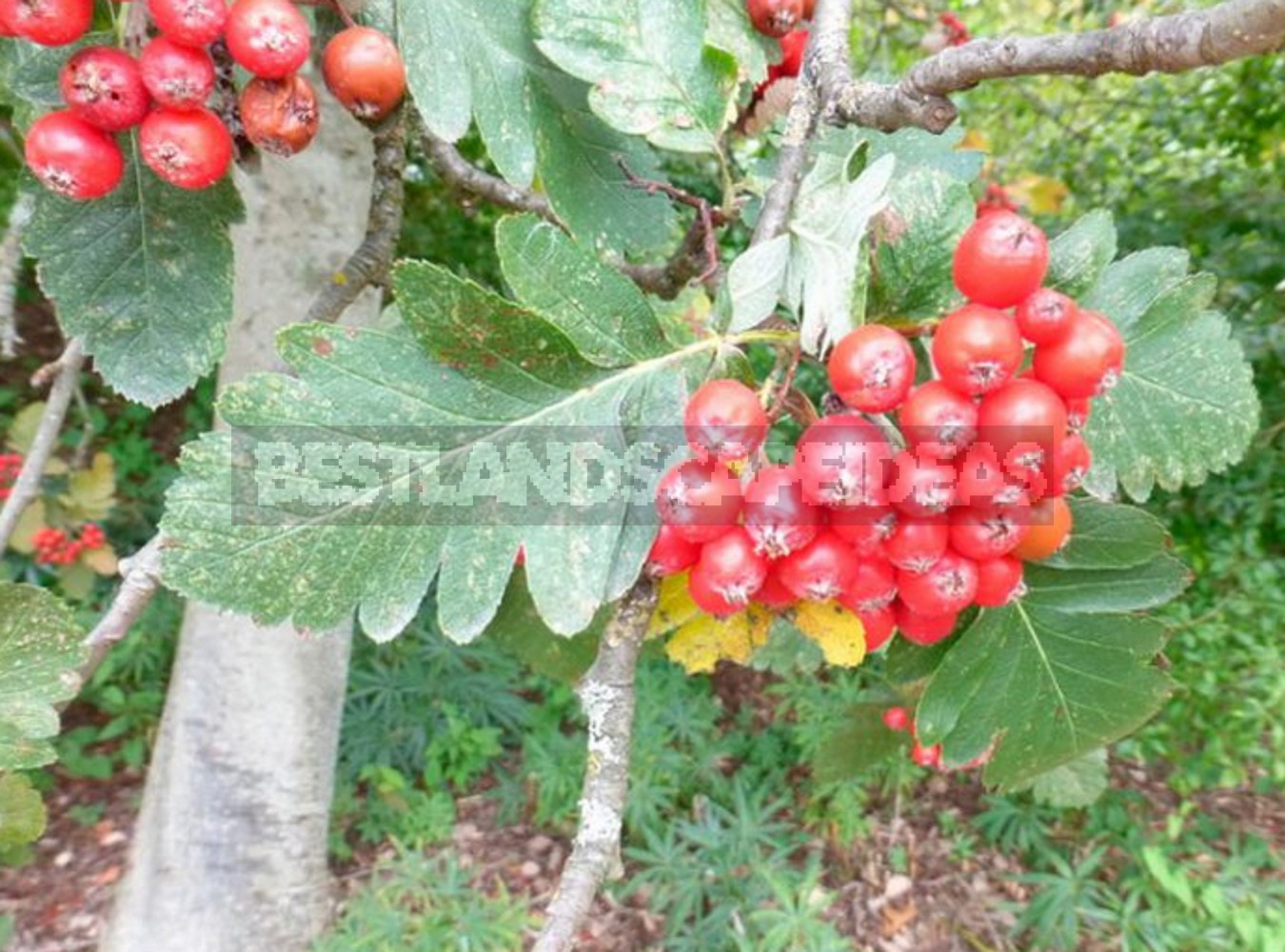
This plant is a natural hybrid of intermediate mountain ash and red mountain ash. In natural conditions, this species can be found in Northern Europe. Complex leaf plates combine simple pinnate and lobed leaflets. The front surface of the foliage is green and bare, and the wrong side it has a pale gray or whitish pubescence. Are gardeners growing just one more hybrid a variety of Thuringian, which was obtained by crossing round-leaved mountain ash and red mountain ash. In this tree, compared to the hybrid rowan, the blades on the leaf plates are not cut so much, while they are more blunted and wider.
Common mountain ash (Red)
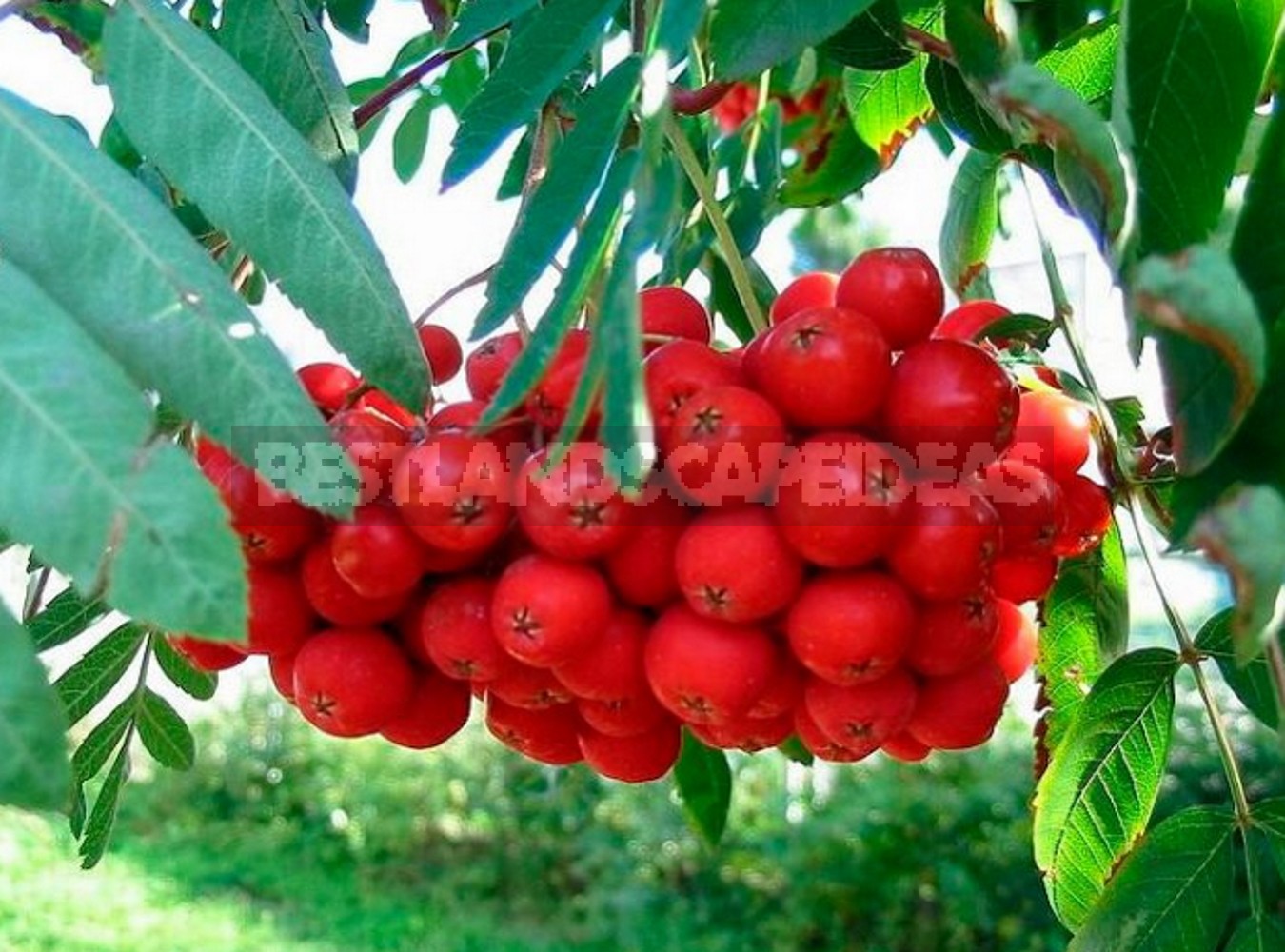
A detailed description of this type can be found at the beginning of the article. It has a large number of decorative forms that differ among themselves in the color of berries, the shape of the crown and the color of the foliage, for example: liqueur, pomegranate, pyramidal, weeping, Beisner, Moravian, or sweet Fifeana, etc.
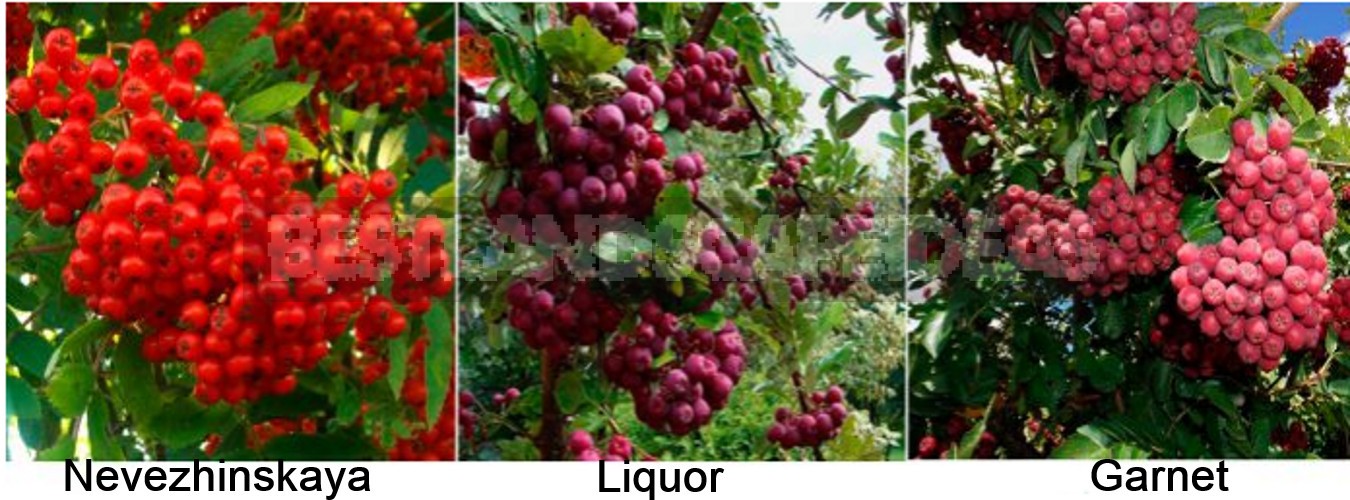
- Mountain ash Moravian, or sweet. In nature, it is found in the Sudeten Mountains. Leaf plates in comparison with other varieties are more openwork, and the flowering of such mountain ash begins a little later. The composition of the inflorescences can sometimes include about 150 flowers.
- Liqueur. The color of the berries is black and purple. This mountain ash has a very high frost resistance.
- Garnet. The variety was born as a result of crossing large-fruited hawthorn and red mountain ash in 1925. The height of such a tree is about 400 cm (13.1 feet). The smooth, glossy, simple leaf plates are about 17 centimeters (6.7 inches) long. In the upper part of the leaves are whole elliptical or egg-shaped, and in the lower part pinnately dissected. Maroon sweet and sour berries have a value equal to a cherry. The species has a very high frost resistance.
- Burka.It was born in 1918 when crossing red mountain ash and Alpine mountain ash. The dark green simple leaf plates are pinnately dissected and have weak pubescence. Oblong brown-red berries have an average size. Mountain ash remains very beautiful throughout the season.
Gardeners also grow such varieties of mountain ash as: mixed, intermediate, or Swedish, alder, Kene, Vilmorena, Amur, and some others.
Best Varieties for Garden
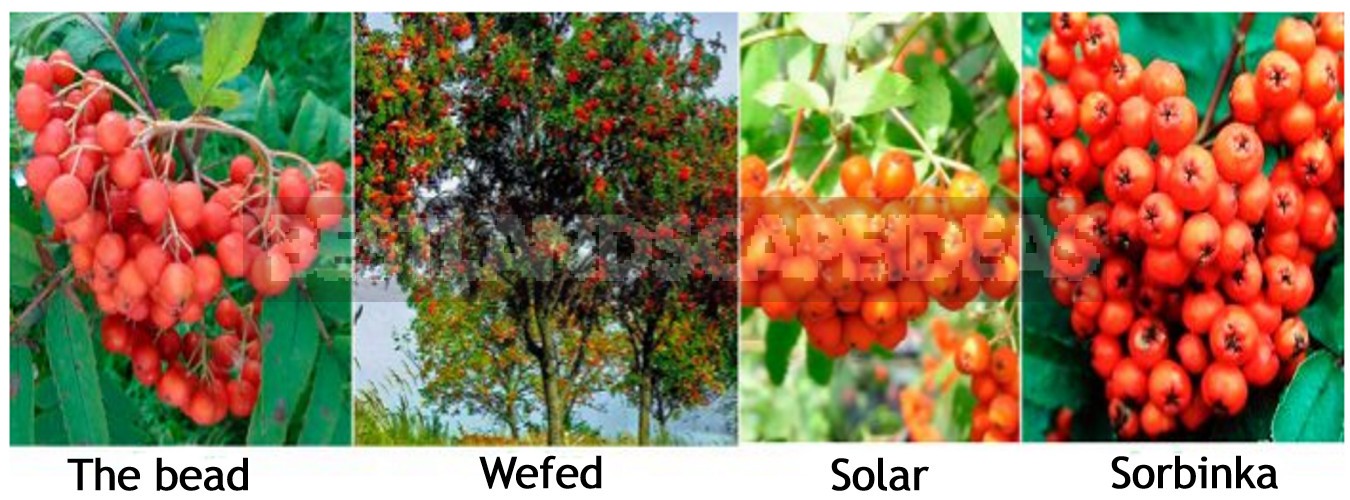
- A bead. The plant is medium-sized. The berries are juicy and taste similar to cranberries.
- Wefed. The sweet-fruit variety is characterized by high yield and frost resistance. The purpose of this variety is table and dessert. The fruits of the pink-yellow color are very spectacular.
- Solar. The variety is stably fruiting. Rich orange berries with a blush of red color are very tasty and fresh, and ground with sugar.
- Sorbinka. The variety is characterized by high yield and frost resistance. The berries are red and large, they can be eaten fresh or used for processing.
Also very popular are such varieties of red mountain ash as: Kirsten Pink, Red Tip, Carpet of Gold, Jermins, Titanium, etc.
Mountain ash in landscape design
Rowan tree in landscape design can play a secondary or major role. Gazebos and arches are decorated with mountain ash of a weeping form, it is also planted on the lawn or on the edge of the forest far from other trees, as a solo plant.
This plant looks great in a group with other shrubs and trees, for example, with spirea or barberry. Also, mountain ash is perfectly combined with coniferous crops (thuja, pine, fir or spruce). Especially in autumn, when the mottled mountain ash looks very impressive on a green background of coniferous trees.
Most types of mountain ash are able to emphasize the effectiveness of viburnum and rose wrinkled. From the shrubby mountain ash, you can create a hedge, against which the perennial flowers will look great. When choosing a place to plant such a crop, we should not forget that it reacts extremely negatively to the polluted and smoky air that is inherent in cities.
Properties: Harm and Benefit
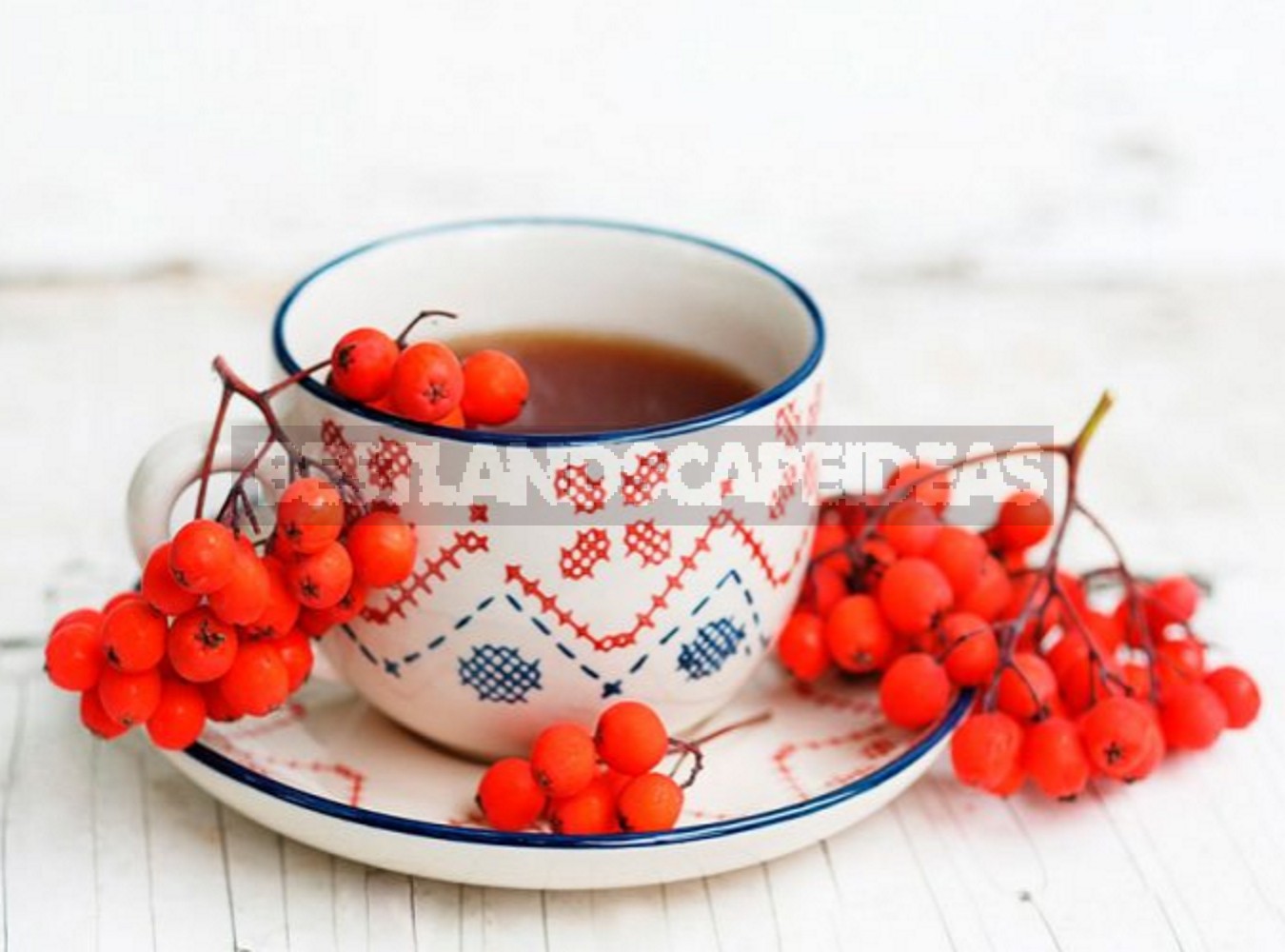
Useful Properties
In the berries of red mountain ash, vitamin C is very much, it contains even more than in lemons. Berries also contain vitamins P, B2, PP, K and E, as well as provitamin A, amino acids, tannins, organic acids, iodine, potassium, magnesium, iron, copper, and manganese. Such berries are characterized by a diaphoretic, hemostatic, choleretic and diuretic effect. In Norway, this plant is used as a wound healing and decongestant, in Hungary it is used to treat dysentery, in Bulgaria, with the help of berries, stones are removed from the kidneys.
Since berries contain a lot of vitamins, they are used to improve the condition of the body in diabetes, kidney and liver diseases, anemia, hemorrhoids, diseases of the digestive system, especially in gastritis, colitis and peptic ulcer disease.
Healing properties are found in the flowers, bark, leaf blades and berries of the rowan tree. Hypertension is treated with a decoction of bark, with scurvy, it is recommended to take a drug from the foliage, since they contain a lot of vitamin C (more than in berries). Preparations from flowers and berries are used for metabolic disorders and colds.
This plant can also be used externally for wounds, various inflammations, burns and warts.
To promote health in the morning, it is recommended to drink a drink made of mountain ash, which has tonic properties. In the evening, in a thermos of 3 liters, you need to pour one large spoon of fresh or dried berries of mountain ash, barberry and rosehip. It is filled with freshly boiled water and tightly closed. This tea should be drunk from morning until lunch, then pour boiling water into the thermos again, wait until the drink is infused, and drink again.
Attention!
Rowan berries are forbidden to use for people who have suffered a heart attack or stroke, and also with coronary heart disease and with increased blood clotting. They are also not recommended for people with high stomach acidity.


